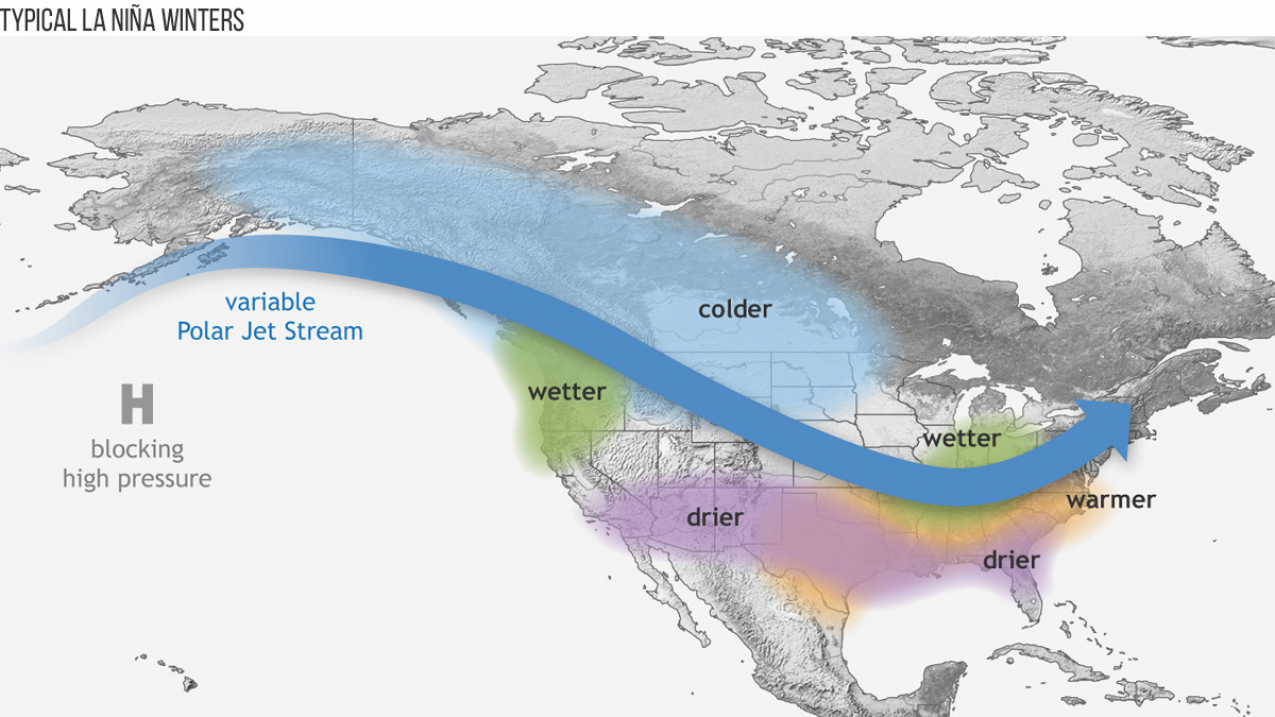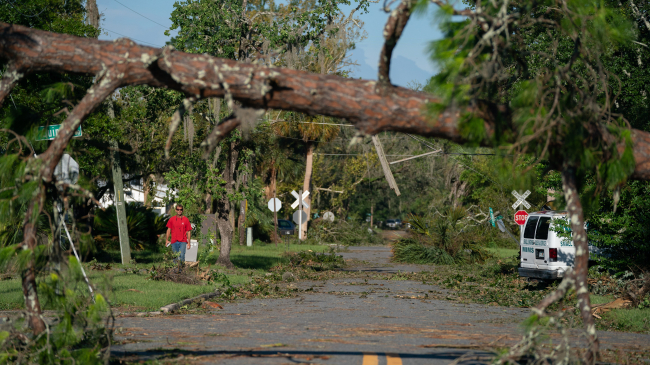Weather this winter to be influenced by climate phenomena
La Nina has arrived and is favored to stick around through winter. Forecasters say the climate phenomena will likely contribute to drier and warmer weather in the southern U.S. and wetter, cooler conditions in the Pacific Northwest and across to the northern tier of the nation this winter.

Wintertime La Nina patterns (Image credit: NOAA)




